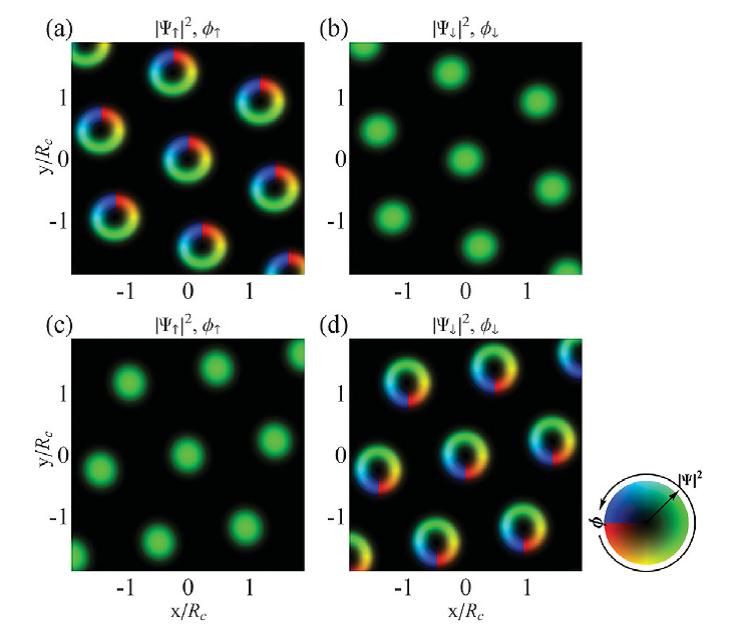NTSC Made New Advances on Research of Ultracold Atom physics
Very recently, the research group led by researcher Zhang Shougang of Quantum Frequency Standards Lab (Key Laboratory of Time and Frequency Primary Standards of CAS) from NTSC, Chinese Academy of Sciences made new advances on the research of uracold atom physics. The article entitled “Chiral Supersolid in Spin-Orbit-Coupled Bose Gases with Soft-Core Long-Range Interactions” has been published in <Physical Review Letters>, where chiral supersolid phase can be induced in a spin-orbit-coupled Bose-Einstein condensate with soft-core long-range interactions.
The supersolid phase is an exotic state of matter predicted by scientists in the 1960s and 1970s. It has both solid and superfluid properties. In 2004, the experimental team of the Pennsylvania State University has published papers in Nature and Science respectively, claiming the discovery of supersolid phase in helium-4, which caused widespread controversy among scientists. Wolfgang Ketterle, a famous physicist and Nobel Prize winner in physics in 2017, made the first experimental observation of supersolid fringes in spin-orbit coupled Bose-Einstein condensation by using Bragg diffraction technique, which marked a major breakthrough in the study of the supersolid phenomena.
At present, the supersolid phase in a two-dimensional spin-orbit coupled Bose condensate has attracted extensive interest of physicists. A new ultracold atomic system has been designed by the research team of the National Time Service Center, which enables supersolids to exhibit nonmediocre quantum hydrodynamic and magnetic properties in the presence of spin-orbit coupling. It is found that the chiral symmetry is broken with spontaneous emergence of circulating particle current. This implies that a finite angular momentum can be generated with neither rotation nor effective magnetic field. The direction of the angular momentum can be altered by adjusting the strength of spin-orbit coupling or interatomic interaction. This discovery provides a new understanding of spin-orbit coupling and the supersolid phenomena, and opens up a new direction for the exploration and discovery of novel quantum states.
There are still many difficulties in the experimental realization of this novel quantum state. One of the key problems is how to realize the specific form of spin-orbit coupling. In the future, the research team will make use of the mature cold atomic clock system of the National Time Service Center and the technology accumulation in the research and development of the clock. Through cooperation, the team will strive to break through the technical bottleneck of the traditional cold atomic system and realize the high-performance cold atomic clock.
This work was supported by National Natural Science Foundation of China, CAS "Light of West" Program and the Youth Innovation Promotion Association of CAS.
Physical Review Letters, which is a flagship magazine of the American Physical Society. It mainly publishes the latest research results of physics and related interdisciplines. It is one of the most recognized top academic journals in the field of international physics. The latest Sciences Citation Index has an impact factor of 8.46.

Figure: The chiral supersolid induced by Rashba spin-orbit coupling and soft-core long-range interactions. The density and phase distributions represented, respectively, by brightness and color, and the directions of the arrows in the color wheel indicate the elevation of the respective quantities.


